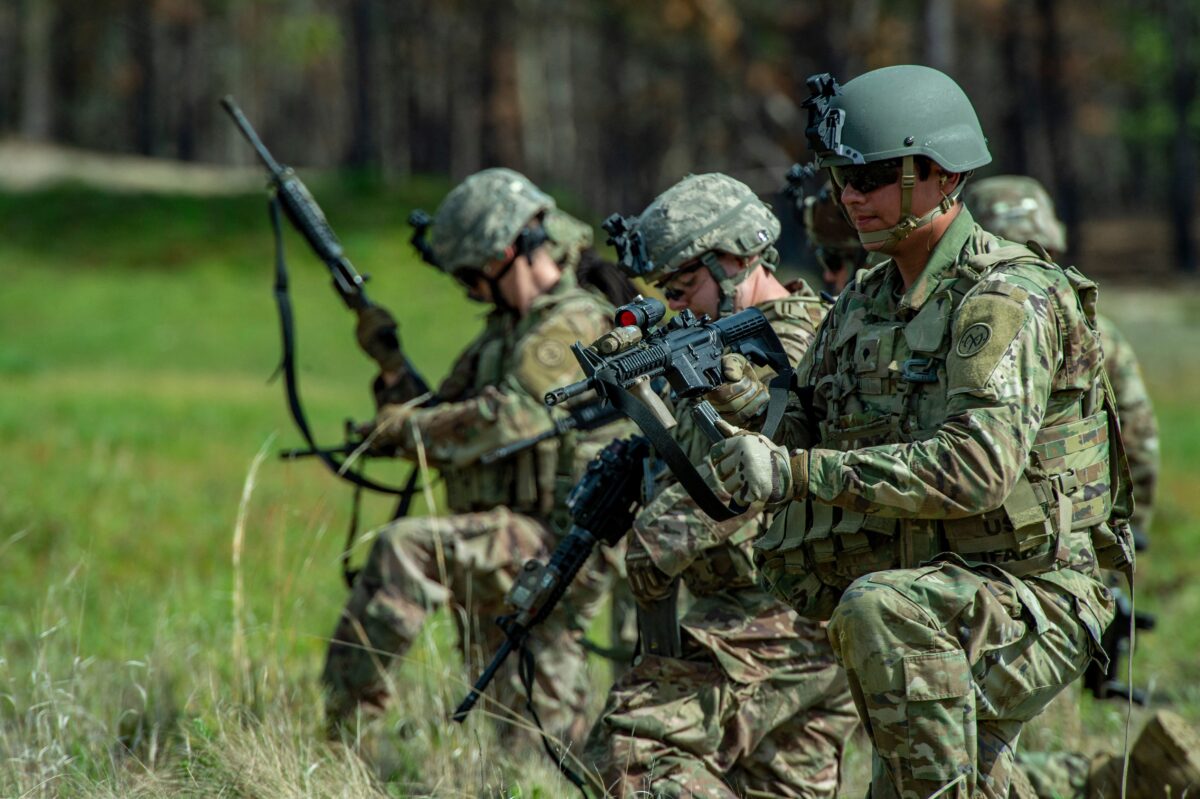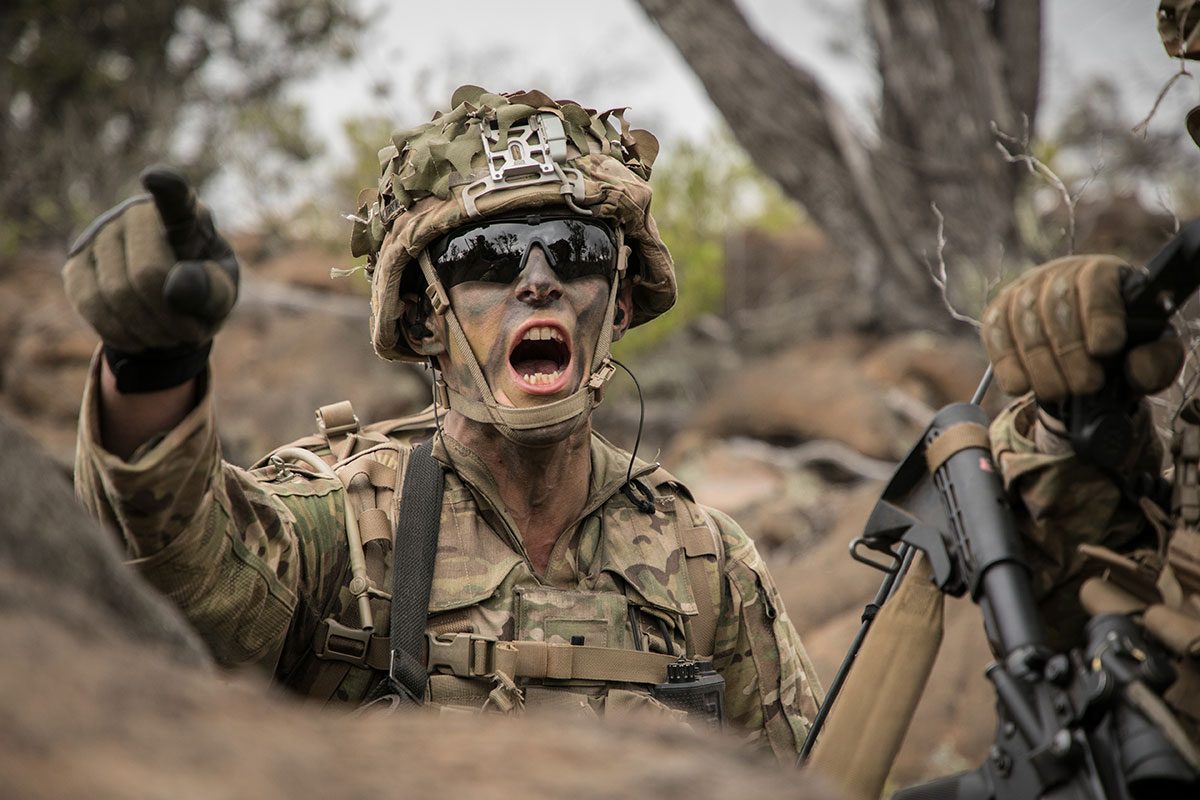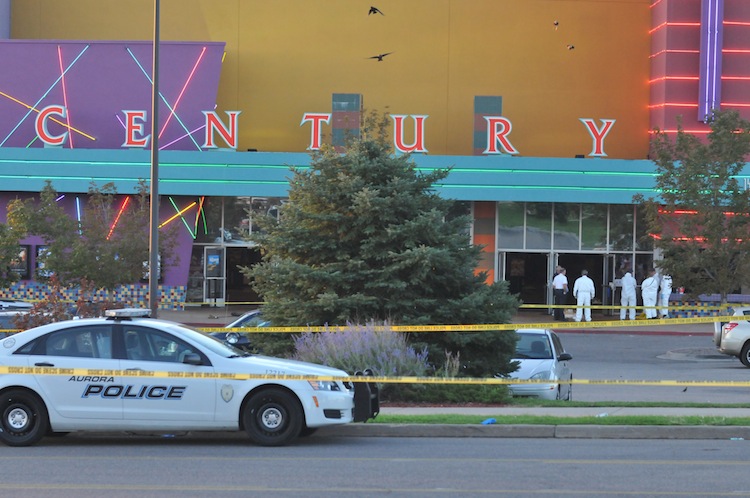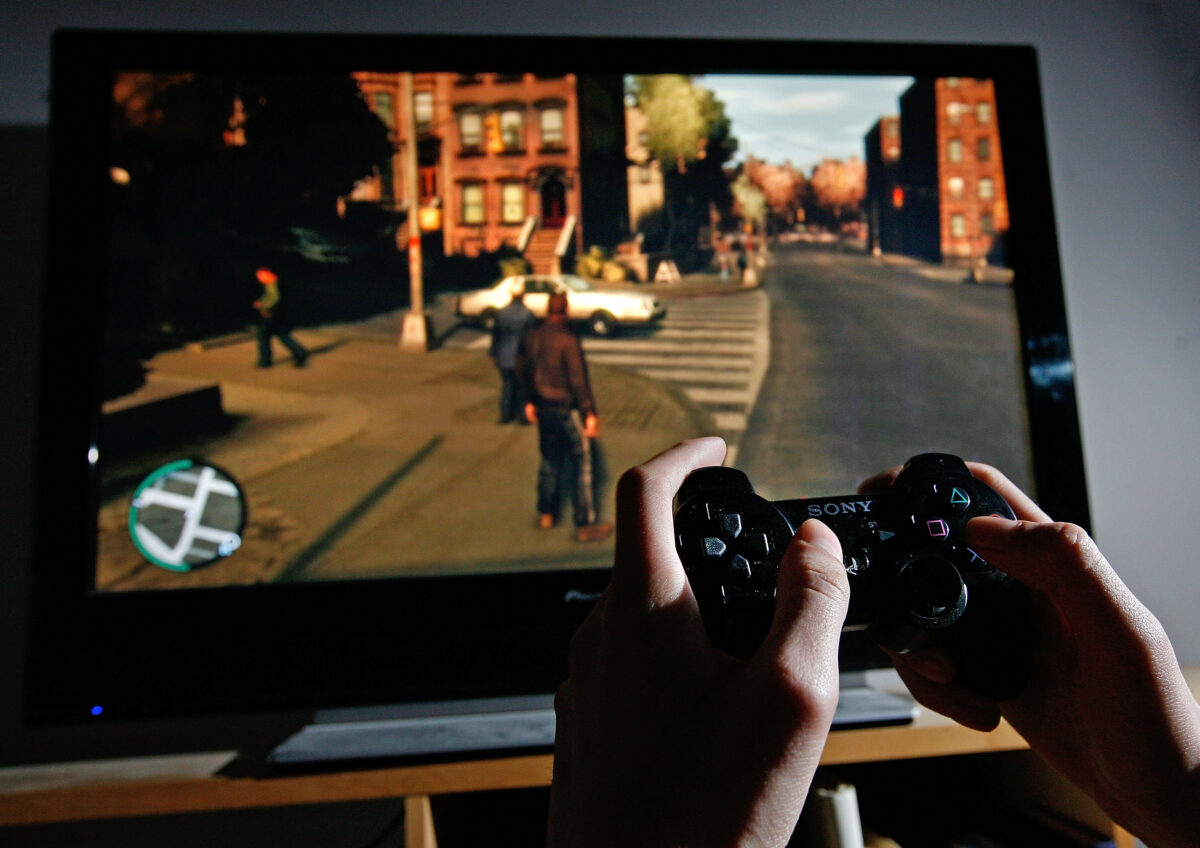As mass shootings make headlines, one man who has spent years studying what it takes to get men to kill said it is clear that violent entertainment is a how-to manual for many killers.
According to retired U.S. Army Lt. Col. Dave Grossman, violent media molds the character of its consumers just as military basic training conditions soldiers to kill. Grossman is a psychologist, author, and public speaker. Grossman said the media, especially computer games, normalize abnormal behavior to the point that injury and death are rewarded.
“This is pathological play; this is dysfunctional play,” Grossman told The Epoch Times.
A 2015 resolution passed by the American Psychological Association (APA) backs his claim.
“Scientific research has demonstrated an association between violent video game use and both increases in aggressive behavior, aggressive affect, aggressive cognitions and decreases in prosocial behavior, empathy, and moral engagement,” the resolution reads.

In an email to The Epoch Times, APA spokesperson Kim Mills confirmed that this is still the APA’s position. But Grossman’s detractors said the connection between violent entertainment and actual violence is tenuous.
Chris Ferguson, professor of psychology at Stetson University in DeLand, Florida, has conducted meta-analyses of several studies. He said the studies generally find a weak connection, if any.
“We’re really just not finding any evidence,” Ferguson told The Epoch Times.
Grossman disagreed. He said the games teach killing in the same way that soldiers are trained through “operant conditioning.”
Russian psychologist Ivan Pavlov pioneered this technique in the late 1800s when he realized that dogs he used in his work would salivate whenever the assistant who fed them entered the laboratory.
Pavlov developed the technique to get a specific reflexive reaction to certain stimuli. In law enforcement training, this is called “muscle memory.” It makes drawing a weapon and giving commands an automatic response to threatening or hostile behavior.

After World War II, the U.S. military devised training methods to get soldiers to fire their weapons in combat after military historian Brig. Gen. S.L.A. Marshall released data indicating that only 15 to 20 percent of soldiers in World War II fired their weapons in battle.
According to Grossman, most people have an internal “safety switch” that controls violent impulses. He said this is an evolutionary mechanism to preserve the species that manifests as a reluctance to shoot an enemy even though that enemy may shoot them.
In recent years, World War II veterans and historians have disputed Marshall’s data. They said the United States would have lost the war with a firing rate as anemic as 20 percent. In addition, historians have reviewed Marshall’s claims and found many of them to be false. This included his account of his war experiences.
Grossman countered that there are studies that back Marshall’s figures.
Whatever the truth, U.S. military leaders initially accepted his data. They changed their training regimen based on Marshall’s numbers; Grossman said the training program became an example of classic conditioning.

Soldiers no longer shoot bull’s-eye targets on a traditional range. They now stand in a foxhole overlooking a simulated battlefield with wrecked vehicles, fallen trees, and bomb craters.
As man-shaped targets pop up from behind cover, the soldiers are told to “engage the closest target” until it drops. They repeat the action for the next target. In addition to the immediate reward of the target falling, soldiers receive medals marking their success based on the number of targets they hit. This work-reward cycle is the conditioning meant to turn off the soldiers’ internal safety switch.
The soldiers are also given training on the rules of war and when it’s not permissible to fire.
Grossman said he can attest to the effectiveness of the training. He said there is data to indicate that firing rates in Vietnam approached 90 percent. Grossman said the average first-person shooter game provides similar training.
With realistic sounds, constantly improving computer graphics and instant rewards, gamers are desensitized to bloody violence and crime while associating the activity with pleasure and fun. In addition, Grossman points out that soldiers only train for specific periods. The computer gamer typically sets his schedule.

A November 2017 article in Pediatrics, the American Academy of Pediatrics journal, said that teenagers consume some form of entertainment media an average of nine hours a day.
“Video games, in particular, have increased in popularity, with some teenagers reporting that they play [more than] 40 hours per week,” the article reads.
Grossman pointed out that games have grown in popularity.
“There’s many more of these kids out there today,” he said.
Ferguson countered that millions of people play games and never kill anyone other than their digital enemies. He believes the threat is overblown by hyperbolic media coverage of the mass killings and a desire to place blame. According to Ferguson, most gamers want to relax and have fun.
Fun Is Part of the Problem
“When people know that what they’re consuming is fictional, they don’t really learn from it. Our brains are able to distinguish the reality of a situation and assign different values to it,” Ferguson said.
Grossman said that fun is part of the problem. In the immensely popular “Grand Theft Auto,” players are rewarded for carjacking random victims using a variety of weapons. Each shooting is accompanied by spurting blood, cries of pain, and increasing scores.
Players may also have sex with prostitutes in the game and earn status by beating or killing the prostitutes to get their money back. Grossman said this could be very damaging for a child or young adolescent who may not be able to distinguish the game’s realism from actual reality.
Still, Ferguson pointed out that critics of computer games are very selective about the crimes for which they blame the games. He said that when two middle-aged Asian men committed separate mass murders in two California dance studios or when a 64-year-old killer shot into a concert crowd in Las Vegas, no one talked about their computer game activity.
Likewise, the killer who went on a rampage at Sandy Hook Elementary School in Connecticut in 2012 was known for his love of computer games. His favorite was the nonviolent game, “Dance Dance Revolution,” in which the player must step on specific pads on the floor in time with the game’s soundtrack.
Gun Control Is Not a Solution
“[Computer games are not] the primary issue we should be focused on. I don’t think responsible gun owners are the problem here either,” Ferguson said.
He believes building and funding mental health facilities is a better solution to explore.
Grossman agreed that mental health care is essential. But, he said it’s incumbent upon the media to take responsibility for its marketing and handling of violent content. He said that computer games get the lion’s share of the blame, but that movies and television programs also cause problems.
“It’s time the media man up and accept some responsibility,” Grossman said.
This is not the first time a new technology has been in the spotlight.
Not the First Issue
In 1897, prizefighting was illegal everywhere except Nevada. However, courts had ruled that films of prizefights did not violate federal law. So local officials got to regulate the practice.
According to the website studiobinder.com, Maine outlawed violent films. Anyone showing a prizefighting film could be fined $500.
Filmmakers challenged Maine’s law on First Amendment grounds. In the 1915 Supreme Court case, Mutual Film Corp. v. Industrial Commission of Ohio, the high court ruled that the First Amendment did not cover movies.
The court ruled that film was an entertainment business and could be regulated. For the next 37 years, movies would be subject to government censors.
In 1952, the U.S. Supreme Court heard Burstyn v. Wilson. New York state had revoked Joseph Burstyn’s license to distribute the Italian film “The Miracle” because it was sacrilegious.

The court ruled that the industry had changed significantly since 1917. Film had become a means of impacting the culture and promoting ideas. So, it did merit First Amendment protection.
This protection was extended to computer games in the 2011 case, Brown v. Entertainment Merchants Association (now known as OTT.W).
In that case, a California obscenity law banning the sale of violent computer games to minors was struck down because the state failed to connect video game violence and actual violence. In addition, the industry had a voluntary rating system that parents could use to determine which games were suitable for their children.
The late Supreme Court Justice Antonin Scalia wrote for the majority that violence in children’s entertainment was nothing new.
“Our cases have been clear that the obscenity exception to the First Amendment does not cover whatever the legislature finds shocking, but only depictions of sexual conduct,” Scalia wrote. “Grimm’s Fairy Tales are grim indeed.”
Representatives of OTT.X did not return calls or emails seeking comment.
Grossman said the court’s decision ignores some fundamental truths.
While there has long been violent content in children’s entertainment, he said there’s a clear difference between the coyote trying to drop an Acme anvil on the roadrunner and a computer-generated gang member shooting a policeman with a machine gun. Both may be protected speech, but only one looks real to a child.
According to Grossman, if media truly did not affect behavior, there would be no such thing as an advertising industry. He said media denials are cynical attempts to shirk responsibility. The situation has grown more dire since 2011, he said.
Grossman said his research shows that shooters choose their targets based on several factors—and media figures in to at least one of those.

“One of the motivations in these crimes is fame,” Grossman said.
To get the media attention they crave, shooters typically choose targets for the maximum number of victims. It is believed the Sandy Hook attacker chose that school because the victims would be unable to fight back, and killing children would draw the most outrage.
In 2012, the killer of 12 people in Aurora, Colorado, chose a movie theater showing the latest Batman film because it would be full of unarmed victims. The theater was designated a “gun-free zone.”
According to the Crime Prevention Research Center’s (CPRC) website, that shooter decided against attacking an airport because security was too tight. He wrote that he would also avoid shooting police because “they will kill you.”
The CPRC was founded by John Lott, an economist, researcher, author, and public speaker. Lott told a seminar at the National Rifle Association’s Annual Meetings and Exhibits in Indianapolis on April 15 that most mass shooters have two goals.
No Political Motives
“In general, 72 percent of shooters express no political views. It’s very clear that they want to commit suicide, and they want media attention,” Lott said.
He pointed out that a person carrying a gun in a gun-free zone in Tennessee could get six years in prison. The killer who attacked the Covenant Presbyterian School in Nashville on March 27 killed six people. Because Tennessee is a death penalty state, Lott wondered how much of a deterrent six years would be.
“It’s like there’s no penalty for these people,” Lott said.
Grossman said this does not bode well. He predicted that if no steps are taken to address the issue, mass killers will select more shocking targets.
“I pray that I am wrong,” Grossman said.

